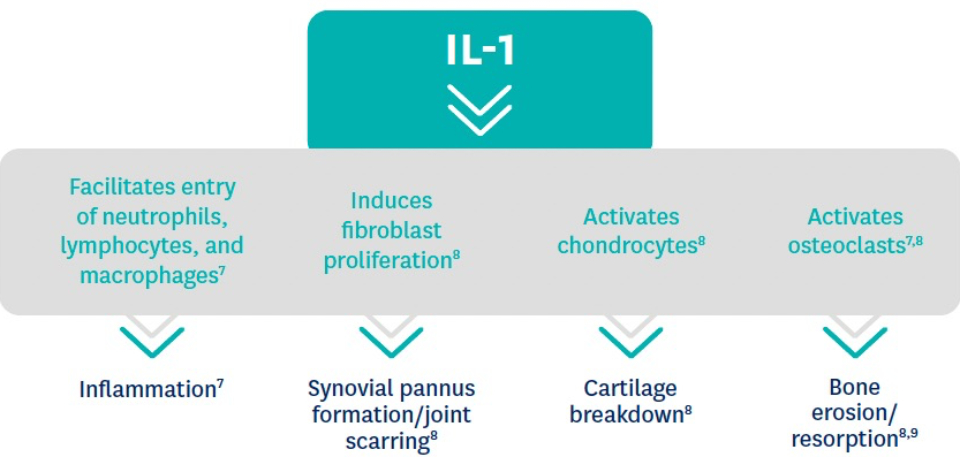The Role of IL-1
How IL-1 fits into autoinflammation
Interleukin-1 alpha (IL-1α) and interleukin-1 beta (IL-1β) are proinflammatory cytokines that play a key role in autoinflammation. IL-1 cytokines are primarily associated with innate immunity, typically as a mechanism of defense.1 When uncontrolled, IL-1 activity can lead to damaging systemic inflammation and the symptoms of autoinflammatory diseases.2-4 The impact of IL-1 is not limited to autoinflammation, but also influences the adaptive immune system, causing persistent inflammation in autoimmune diseases as well.5,6
Uncontrolled IL-1 activity can lead to chronic and sometimes life-threatening systemic inflammation3,5


When the IL-1 pathway is dysregulated, it creates a destructive immune response that adversely impacts a wide variety of tissues and organs.3,10
IL-1–mediated autoinflammation can have direct and indirect involvement in multiple diseases6
- IL-1 dysregulation is a primary driver of autoinflammatory disorders such as cryopyrin-associated periodic syndromes (CAPS) and deficiency of interleukin-1 receptor antagonist (DIRA)2,3,6
- IL-1–mediated autoinflammation can also be a component of diseases like rheumatoid arthritis (RA), typically considered to be autoimmune in nature7
Whether it is driven by the innate or adaptive immune system, extraarticular manifestations of autoinflammation can include:
- Recurrent fever7,11,12
- Painful skin rashes7,13
- Headaches13
- Fatigue7,11,12
- Muscle weakness12
- Keratoconjunctivitis sicca (dry eye)12
- Hypotension7
- Elevated acute-phase reactants (C-reactive protein [CRP], erythrocyte sedimentation rate [ESR])7,12

IL-1–mediated autoinflammation can lead to long-term, irreversible damage and disability14
